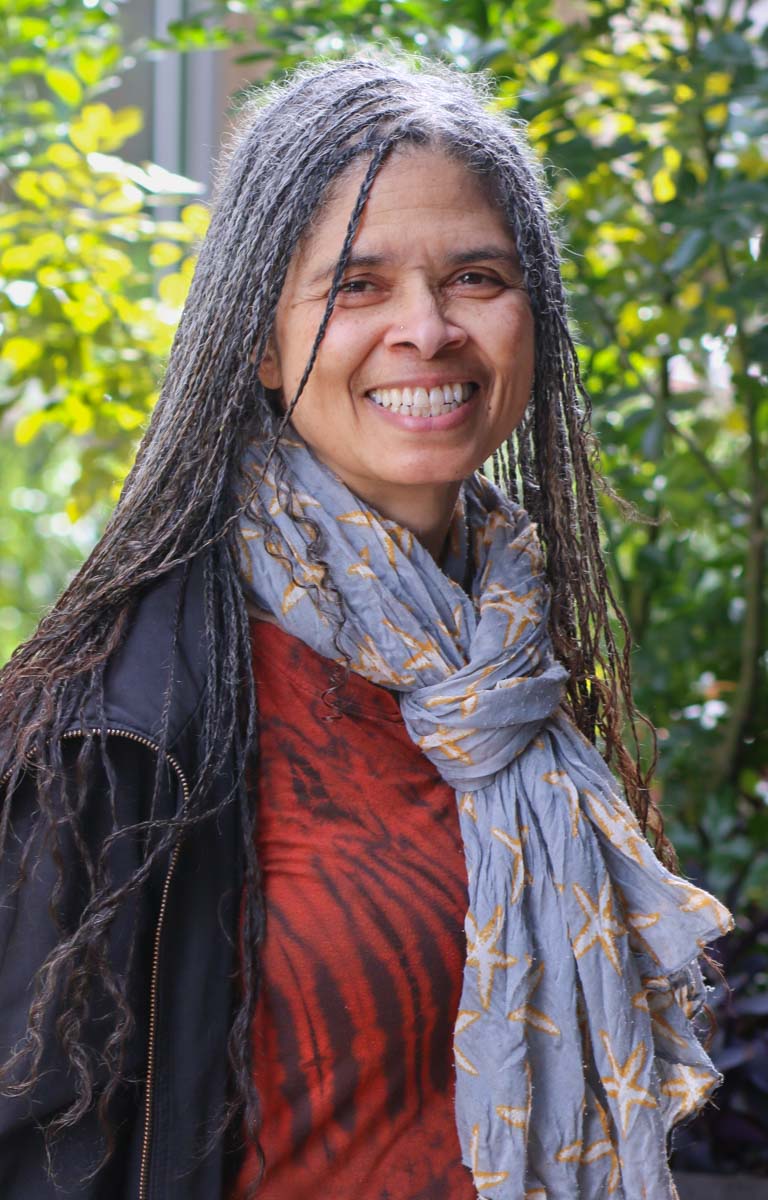 In the more than 30 years I’ve been involved with co-ops—student housing co-ops, food co-ops, even a worker-owned collective—almost all of the participants have been white. The same has been true for most of the co-op conferences, meetings, and trainings I’ve attended. Currently I work with food co-ops across the country in which the overwhelming majority of the directors, staff and customers are white.
In the more than 30 years I’ve been involved with co-ops—student housing co-ops, food co-ops, even a worker-owned collective—almost all of the participants have been white. The same has been true for most of the co-op conferences, meetings, and trainings I’ve attended. Currently I work with food co-ops across the country in which the overwhelming majority of the directors, staff and customers are white.
As state violence against minorities has become daily news, and Black Lives Matter has emerged as a movement championing black rights, many of us are starting to self-reflect on the racial makeup of our movement. We’re starting to ask ourselves why, despite our mission to be welcoming to all, do our co-ops remain primarily white? Could the racial makeup of our co-ops be an unwitting reflection of our society’s racial inequities? What can directors do to better support the co-op values of “democracy, equality, equity and solidarity” in a society divided by race?
- First, don’t leap too soon to action, or to “help.” The authors of “Beyond inclusion: Toward an anti-colonial food justice praxis” suggest that “focusing on inclusion may re-inscribe privilege rather than redress the inequities that characterize the contemporary food system. When activists (and, in particular, white, middle-class, settler activists) talk about including diverse groups, they can reinforce preconceived notions of who ‘needs help’ and who are the helpers.[1] Strategies that focus on changing the behaviors of individual people of color can neglect to address the systemic inequalities that racism creates. Asking what people want before taking action is a more respectful approach to any kind of support effort.
- Don’t assume you know why people of color don’t shop at your co-op. I’ve heard co-op directors express concerns about having to carry less healthy food in order to attract non-white shoppers. This assumes, incorrectly, that no people of color are attracted to healthy food. And it’s important not to conflate race and class. In the U.S., poor whites outnumber poor blacks by 4 to 1; thus providing food subsidies, while potentially a great program, is unlikely to increase your co-op’s racial diversity. Gathering data, through surveys, research, or focus groups, can provide useful information about people’s shopping behaviors.
 Do talk about race. In his TEDX video, “How I Learned to Stop Worrying and Love Taking about Race,” Jay Smooth gives some great advice about how to make conversations about race more effective and less distressing. Surprisingly, he’s able to do this while also being funny. It may be obvious, but deserves stating—we can’t solve a problem that we won’t talk about. My local NAACP offers some great resources for conversation starters. Check out their webpage[2] or scan the webpages of anti-racism organizations in your area.
Do talk about race. In his TEDX video, “How I Learned to Stop Worrying and Love Taking about Race,” Jay Smooth gives some great advice about how to make conversations about race more effective and less distressing. Surprisingly, he’s able to do this while also being funny. It may be obvious, but deserves stating—we can’t solve a problem that we won’t talk about. My local NAACP offers some great resources for conversation starters. Check out their webpage[2] or scan the webpages of anti-racism organizations in your area.- Do educate yourselves. Question what you know. In their essay, “The food system should unite us, not divide us,” Lindsey Haynes-Maslow and Ricardo Salvador write that, “The United States’ agrifood system was built upon appropriation of the means of production by European colonists, involving land-grabbing, enslavement, and labor exploitation.”[3] Our enculturation in a society based on racial oppression often perpetuates untruths or incomplete narratives. Check out Food Solutions New England’s 21 Day Racial Equity Habit Building Challenge[4] or their Racial Equity Challenge Resources page[5] for some excellent resources.
- Research your community’s racial history. We are living with the effects of multiple generations of racial violence that we need to understand before we can heal. To quote William Faulkner, “The past is never dead. It’s not even past.” I learned, for example, that slavery used to be pervasive in the Northampton, MA area where I live, (see Slavery in the Connecticut River Valley, Robert Romer). I also learned that Sojourner Truth, the famous abolitionist and civil rights activist, lived in Florence, MA and was a member of Northampton Association for Education and Industry, a utopian community organized around a communally owned and operated silk mill. Florence was also a stop on the famed Underground Railroad, and many famous abolitionists, including Frederick Douglas, visited here.
- Collaborate: Are there organizations in your region trying to address racism? What are they doing? Could your organization derive mutual benefit from collaborating? Invite folks from these organizations to speak at your board meetings about their work. Consider if there are ways you could support them.
- Work on your own racism: Don’t assume that you can’t be racist because you don’t intend to be. Studies show that we all have biases that we may be unaware of. [6] Project Implicit,[7] an online survey by Harvard University, allows you to test yourself for implicit racial bias, and also gives tips on how to change your outcome if you don’t like what you discover.
- Consider revising your co-op’s foundational documents. If you use Policy Governance, revisit your Ends and/or Executive Limitations policies. Do you say anything explicit about race? Revising your Ends could be a great member-engagement strategy.
Above all, be patient, and kind to yourself and others. Lasting change can take time to achieve, especially in a fiercely competitive environment. Though our co-ops are socially responsible, they have to remain viable as businesses in order to have an impact on our communities.
[1] https://www.agdevjournal.com/attachments/article/584/JAFSCD-Commentaries-on-Race-and-Ethnicity-Summer-2015.pdf, page 100
[2] https://amherstnaacp.blogspot.com/p/books-and-papers.html
[3] https://www.agdevjournal.com/attachments/article/584/JAFSCD-Commentaries-on-Race-and-Ethnicity-Summer-2015.pdf, page 106
[4] https://www.foodsolutionsne.org/get-involved/21-day-racial-equity-habit-building-challenge
[5] https://www.foodsolutionsne.org/racial-equity-challenge-resources
[6] https://www.nytimes.com/2015/01/04/upshot/the-measuring-sticks-of-racial-bias-.html?action=click&contentCollection=Asia%20Pacific&module=MostEmailed&version=Full®ion=Marginalia&src=me&pgtype=article&abt=0002&abg=0
[7] https://implicit.harvard.edu/implicit/takeatest.html
 Democracy: successfully sustaining a culture in which people choose meaningful ways to participate for both individual and common good
Democracy: successfully sustaining a culture in which people choose meaningful ways to participate for both individual and common good
Each issue of Connections will focus on one pillar of the Four Pillars of Cooperative Governance. For more information about 4PCG, read the articles in the January/February 2014 and March/April 2014 issues of Cooperative Grocer.
Have more questions?
Get in touch with one of our consultants.

